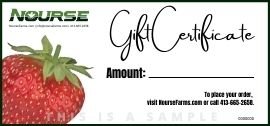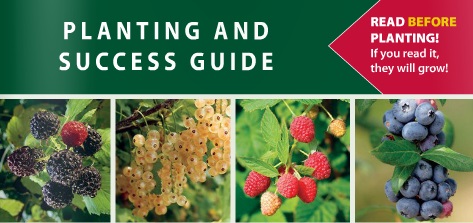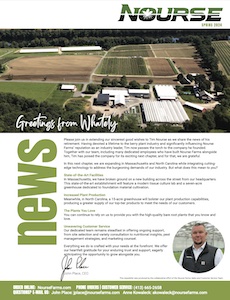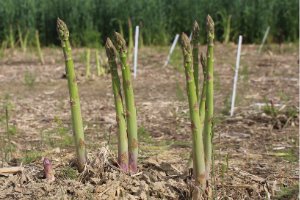Asparagus is a high-value, early season perennial vegetable crop. Locally produced asparagus is available in the northern United States from late April – June.
Most asparagus is sold as fresh produce, direct to consumer through roadside markets, farmers markets, local retailers, CSA, and pick-your-own. Asparagus is an excellent source of early income prior to strawberries and other traditional vegetable crops. The annual consumption of asparagus has increased in recent years to 1.6 lbs. per person in 2016. Asparagus is a low calorie nutritious vegetable; high in iron, fiber, and vitamins C and A. One cup of asparagus contains 3 grams of protein.
FUNDAMENTALS
Our recommendations are based on experience working with growers identifying best practices for commercial asparagus production. It is best to prepare the site well before planting. Remove perennial weeds. Asparagus performs best at a pH of 7.2 or higher. Test soil to ensure correct pH and balanced soil fertility. Some growers till in fertilizer prior to creating furrows. Any fertilizer applied within the furrow should be incorporated into soil prior to planting. For lighter, well-drained soil, a furrow depth of 8" is recommended; 6-8" on heavier silt loam or clay soils. Roots should be placed flat in the bottom of furrow and covered with 2–3 inches of soil. Once plants have emerged and you have full stand, use cultivation sweeps to fill in the furrow. Note that furrow must be level after settling so slight mounding may be necessary depending on soil type. In general, irrigation is not necessary for asparagus production unless you are in dry conditions. Growers have been installing drip irrigation as a systematic water source in event of these conditions with good success.
PESTS AND DISEASES
During the harvest period, manually pull weeds so emerging spears are not injured. If tilling the soil during the growing season, only till ½–1" of the soil surface as deep tilling can damage crowns and bring weed seeds to surface. Be on the lookout for asparagus beetles and their larvae, aphids, and the asparagus miner. Stemphylium and powdery mildew are 2 fungal diseases that infect ferns, affecting production in the next year. Contact your local Cooperative Extension office for chemical weed and pest control recommendations.
MAINTENANCE
HARVEST
A comprehensive 68-page regional bulletin that covers the planting, growing, harvesting, and marketing of asparagus, including a budget with costs and expected income per acre, for the serious commercial asparagus grower. The bulletin includes 25 color photos of insects, diseases, and planting techniques to aid the grower. Written by an asparagus expert with over 30 years of applied research experience in the northeast, southeast and Midwest, enabling asparagus grower become successful.





